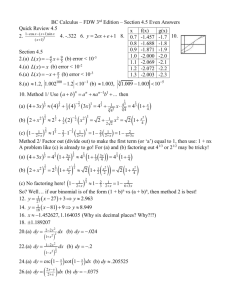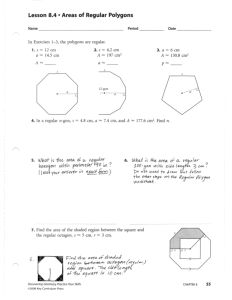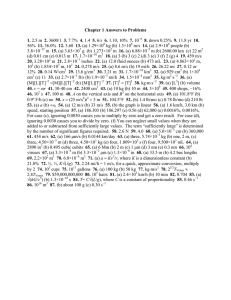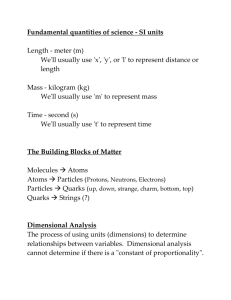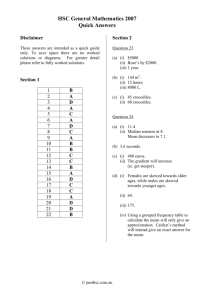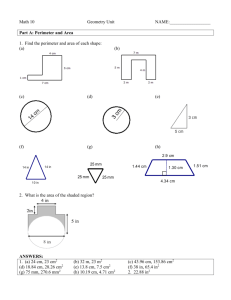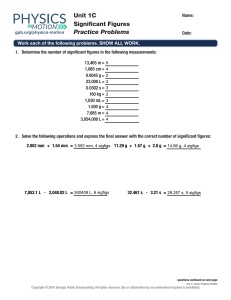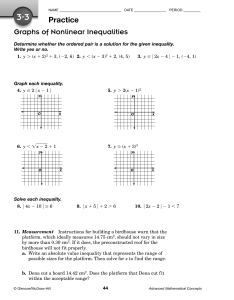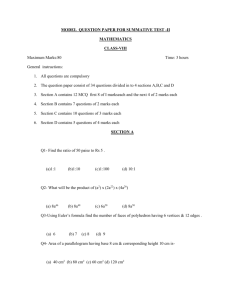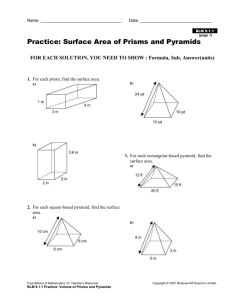AP notes 1
advertisement
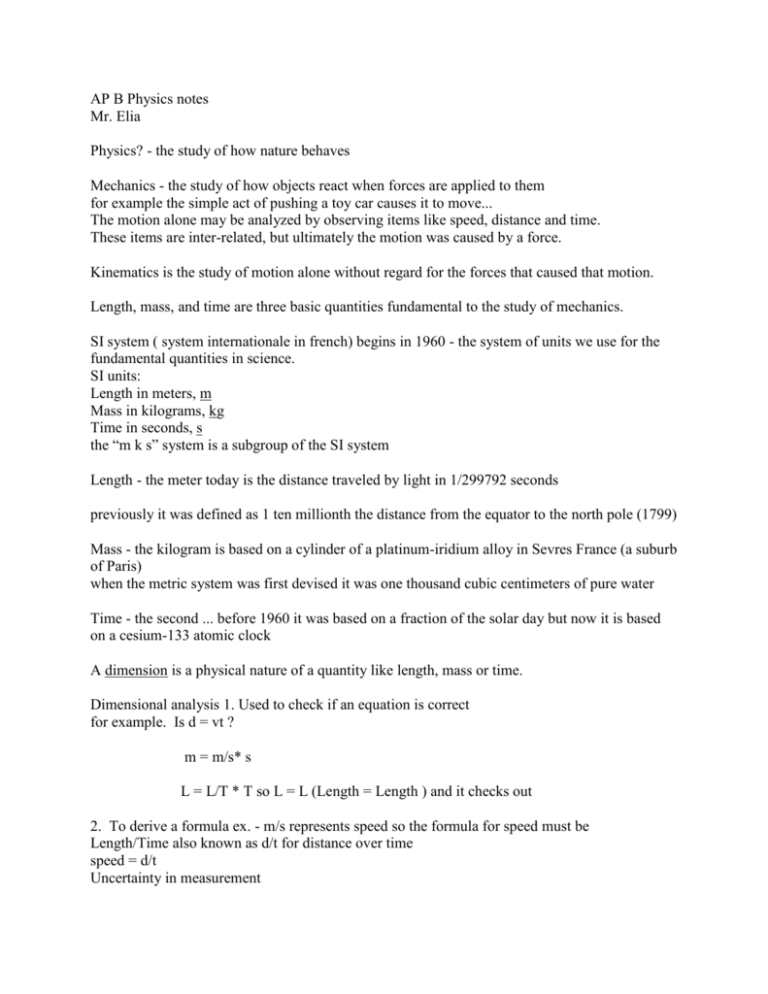
AP B Physics notes Mr. Elia Physics? - the study of how nature behaves Mechanics - the study of how objects react when forces are applied to them for example the simple act of pushing a toy car causes it to move... The motion alone may be analyzed by observing items like speed, distance and time. These items are inter-related, but ultimately the motion was caused by a force. Kinematics is the study of motion alone without regard for the forces that caused that motion. Length, mass, and time are three basic quantities fundamental to the study of mechanics. SI system ( system internationale in french) begins in 1960 - the system of units we use for the fundamental quantities in science. SI units: Length in meters, m Mass in kilograms, kg Time in seconds, s the “m k s” system is a subgroup of the SI system Length - the meter today is the distance traveled by light in 1/299792 seconds previously it was defined as 1 ten millionth the distance from the equator to the north pole (1799) Mass - the kilogram is based on a cylinder of a platinum-iridium alloy in Sevres France (a suburb of Paris) when the metric system was first devised it was one thousand cubic centimeters of pure water Time - the second ... before 1960 it was based on a fraction of the solar day but now it is based on a cesium-133 atomic clock A dimension is a physical nature of a quantity like length, mass or time. Dimensional analysis 1. Used to check if an equation is correct for example. Is d = vt ? m = m/s* s L = L/T * T so L = L (Length = Length ) and it checks out 2. To derive a formula ex. - m/s represents speed so the formula for speed must be Length/Time also known as d/t for distance over time speed = d/t Uncertainty in measurement for and round the final answer to the least # of sigfigs of the numbers that went into the calculation ex. l = 16.3 cm, w = 4.5 cm and area = l X w = 16.3 cm x 4.5 cm = 73.35 cm2 rounded area = 73 cm2 to 2 sigfigs based on the number 4.5 cm but, this is assuming we knew the length and width exaclty. Realistically, we may only know each to a certain degree of precision. Ex. 16.3 0.1 cm and 4.5 0.1 cm therefore A = l x w = (16.3 0.1 cm) x (4.5 0.1 cm) which could = as high as 16.4 cm x 4.6 cm = 75 cm2 or as low as 16.2 cm x 4.4 cm = 71 cm2 so A = 73 2 cm2 scientific notation resolves the ambiguous nature of writing numbers out ex. If the number 1500g had 3 sigfigs make it 1.50 x 103g instead of 1500 with a dash over the first zero With + or - consider the least # of decimal places ex. 123 + 5.35 is not 128.35 it is 128 ex. 1.0001 + 0.0003 = 1.0004 ex. 1.02 - .998 = 0.022 but rounded correctly is 0.02
